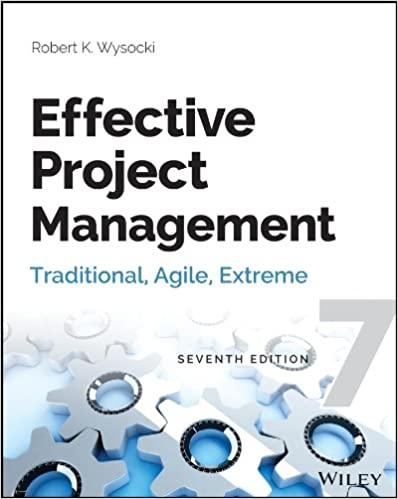Question
MyProject Phase 1: Potential Projects Context Professional Vision and how the knowledge and skills you will gain from this course and other courses in your
MyProject Phase 1: Potential Projects
Context
Professional Vision and how the knowledge and skills you will gain from this course and other courses in your program could help you achieve it.
Introduction
You will be watching a 44-minute tutorial on "Project Management Foundations: Integration" (instructions provided separately) and review the weekly Overview on Chapters provided.
Understanding these groups can help you identify how to go about achieving your specific objective. Once you have a clear understanding of the Knowledge Areas and Process Groups, you can start identifying potential projects or alternative approaches to achieve your specific objective. Each potential project should be evaluated based on its feasibility, alignment with your Professional Vision, and the resources required. The most appropriate project would be the one that best meets your specific objective, aligns with your Professional Vision, and is feasible given your resources. This process of selection requires careful consideration and application of the concepts of Project Management.
Potential Projects
The process of selecting appropriate projects begins with understanding your specific objective or problem to be solved. This is where the 10 Knowledge Areas and the 5 Process Groups come into play. The 10 Knowledge Areas in Project Management are: 1. Project Integration Management 2. Project Scope Management 3. Project Schedule Management 4. Project Cost Management 5. Project Quality Management 6. Project Resource Management 7. Project Communications Management 8. Project Risk Management 9. Project Procurement Management 10. Project Stakeholder Management These areas cover all aspects of a project from initiation to closing. Understanding these areas can help you identify what needs to be done to achieve your specific objective. The 5 Process Groups are: 1. Initiating 2. Planning 3. Executing 4. Monitoring and Controlling 5. Closing These groups represent the life cycle of a project.
Summary Phase 1
At the end of Phase 1, provide a summary table as follows:
Specific Objective to accomplish: | |
Potential Project 1: | |
Potential Project 2: | |
Potential Project 3: | |
Potential Project 4: |
Step by Step Solution
There are 3 Steps involved in it
Step: 1

Get Instant Access to Expert-Tailored Solutions
See step-by-step solutions with expert insights and AI powered tools for academic success
Step: 2

Step: 3

Ace Your Homework with AI
Get the answers you need in no time with our AI-driven, step-by-step assistance
Get Started


